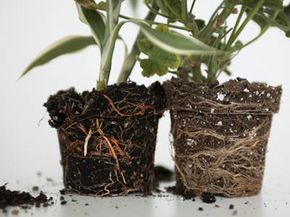If after a heavy rain, your yard holds enough water for Noah to float his ark, maybe it's time for some landscaping to improve drainage, beautify your home and maintain your land. This article covers the three basic soil types and irrigation, as well as the plants and erosion particular to each. Whether you are looking for ways to prevent flooding or you're worried about erosion, read on to find out how to best landscape with your particular soil.
Before we dig in, let's look at soil types. You've got to know your soil before you can truly work with it. There are three basic types of soil: clay, sand and loam [source: Cox].
Advertisement
Loam is a combination of clay, silt, sand and organic matter, and is the best and easiest soil to work with. It has the most diverse combination of materials, giving it the richest soil. Clay, which holds water too long, and sand, which doesn't hold water long enough, can impose limitations on how your yard can be landscaped. Because loam has both, it balances the soil out so it holds the proper amount of water, and the silt and organic matter don't hurt either. Clay and sand can be improved by adding the missing organic matter, which includes everything from yard clippings to barnyard materials such as straw and manure (once it has been composted, of course) [source: Cox]. The richer your soil is, the darker it will be. Next time you're driving through lots of farmland, see if you can spot soil that is almost black - that's loam, the most nutrient-rich, fertile and balanced soil.
Though you might not be lucky enough to house loam in your backyard, you aren't confined to a barren wasteland. Read on to discover how to irrigate your soil type so you can achieve some backyard greatness.
Advertisement
